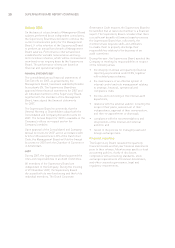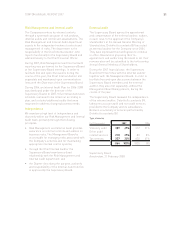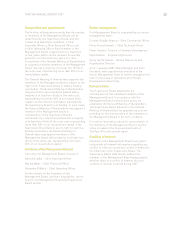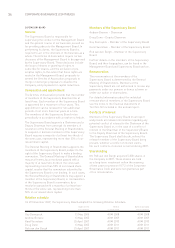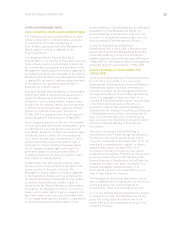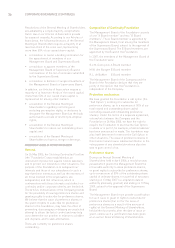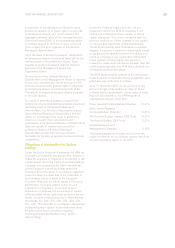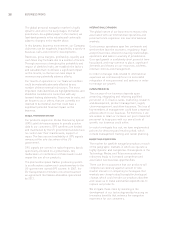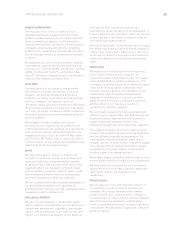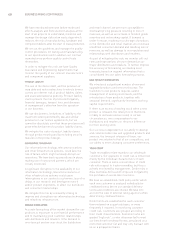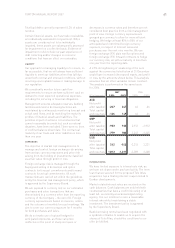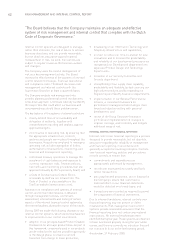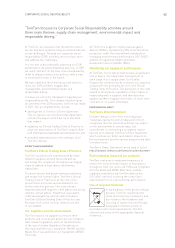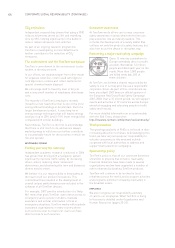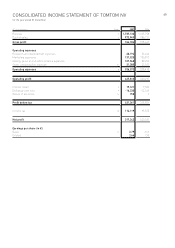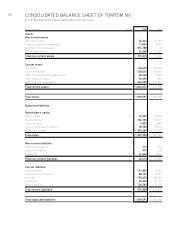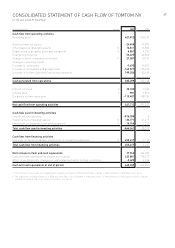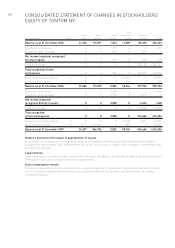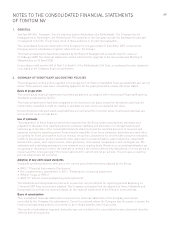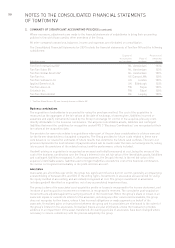TomTom 2007 Annual Report Download - page 46
Download and view the complete annual report
Please find page 46 of the 2007 TomTom annual report below. You can navigate through the pages in the report by either clicking on the pages listed below, or by using the keyword search tool below to find specific information within the annual report.
40 BUSINESS RISKS (CONTINUED)
We have introduced extensive failure mode and
effects analysis and finite element analysis at the
start of all projects to understand, minimise and
manage the design risks at an early stage which
reduces the risk of manufacturing, hardware and
component defects after the start of mass production.
We set out the guidelines and manage the quality
control procedures for testing and manufacturing
toour specifications and in addition our contract
manufacturers perform quality control tests
themselves.
In order to mitigate this risk, we have Quality
Assurance and Engineering departments that
monitor the quality of our contract manufacturers
and component suppliers.
PRODUCT LIABILITY
The use of the device itself, and the provision of
map data and route instructions to vehicle drivers
carries an inherent risk of product liability claims
and associated adverse publicity. Product liability
claims present the risk of protracted litigation,
financial damages, lawyers’ fees, and diversion
of management’s attention from the operation
of our business.
We use disclaimers, limitations of liability to the
maximum extent permitted by law and similar
provisions in our licence agreements, but we
cannot be absolutely sure that these provisions will
proveeffective barriers to product liability claims.
We mitigate the risks of product liability claims
through product testing and by including security
features in the product design.
INFORMATION TECHNOLOGY
Our information technology, telecommunications
and other infrastructure systems, could face the
risk of failure which might seriously disrupt our
operations. We have back-up procedures in place,
making use of outsourced partners, which are
closely monitored.
Asignificant disruption to the availability of our
information technology, telecommunications or
other infrastructuresystems could cause
interruptions in our service to customers, loss of or
delays in our research and development work
and/or product shipments, or affect our distributor
and consumer relationships.
We mitigate this risk by constantly striving to
improveand strengthen our information technology
and telephony infrastructure.
DEMAND FORECASTING
Accurate forecasting of the market demand for our
products is important to our financial performance
and tomaintaining good customer relationships
with distributors and retailers. If the demand is
over-forecast and we over-stock the distribution
and retail channel, we are more susceptible to
downward pricing pressure resulting in loss of
revenues, as well as an increase in finished goods
inventory and net working capital. If demand is
under-forecast, resulting in a shortage of products
in the distribution and retail channel, we could face
unfulfilled consumer demand and resulting loss of
revenues, as well as damage to our reputation and
relationships with distributors and retailers.
As part of mitigating this risk, we monitor sell-out
rates and expectations of future demand at our
major distributors and retailers. To further improve
the accuracy of forecasting, we develop local
forecasts, based on regional information that is
consolidated into our sales forecasting process.
NEW PRODUCTINTRODUCTION
We introduced a significant number of new and
upgraded products and services this year. The
transition to new products requires careful
management of existing stock levels, and the
introduction of new products, together with
seasonal demand, significantly increases working
capital requirements.
If thereis an excess of existing stock when a new
product is released, the retail price of that stock
is likely to decrease and we could, in certain
circumstances, owe compensation to our
distributors and retailers on the price difference
for their existing stock.
Our success is dependent on our ability to develop
and commercialise newand upgraded products and
services, the timing of releases of these, our
product mix relative to that of our competitors, and
our ability tomeet changing consumer preferences.
TRADE CREDIT
Trade receivables relate mainly to our wholesale
customers. Our exposure to credit risk is influenced
mainly by the individual characteristics of each
customer. There is some concentration of credit
risk with respect to trade receivables, but this is
activelymonitored by management. Credit risks in
Asia, Australia, Africa and Europe are mitigated by
the purchase of excess loss insurance.
We have an established credit policy under which
each new customer is analysed individually for
creditworthiness before our standard delivery
terms and conditions are offered. We take into
account the view of external rating agencies when
determining creditworthiness.
Credit limits are established for each customer
then reviewed on a quarterly basis, or more
frequently if required. In monitoring customer
credit risk, customers are grouped according to
their credit characteristics. Customers who are
graded “high risk”, or who otherwise fail tomeet
our benchmark creditworthiness, are placed on a
restricted customer list and may only transact with
us on a prepayment basis.


